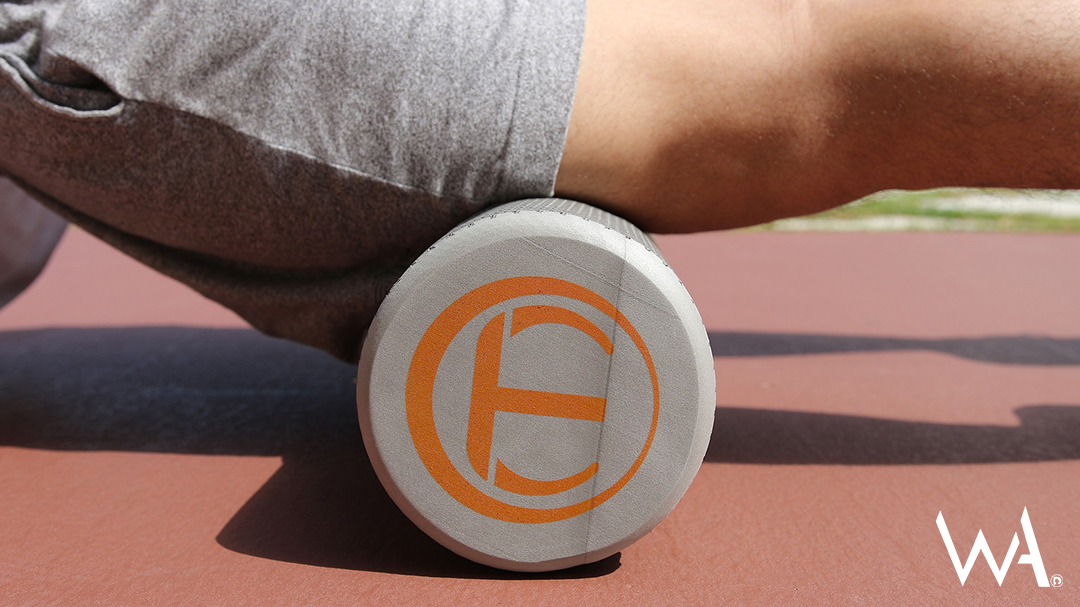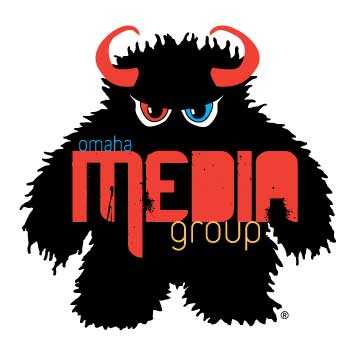
What the heck is myofascial release?
Other Blogs
-
10/30/2024 1:58 PM
Breaking Down Plyometric Training: How to Build Explosive Power for Football
-
10/23/2024 12:00 PM
Offseason Training: Why Speed And Agility Matters
-
10/16/2024 12:05 PM
Functional Strength: Why Athletes Need More Than Just Lifting Weights
-
10/9/2024 12:07 PM
The Role of Flexibility in Sports: Why It’s Key to Preventing Injuries
-
10/2/2024 12:09 PM
Preventing Burnout In High School Athletes
-
9/11/2024 1:34 PM
Injury Prevention 101: Keeping Football Athletes Safe and Healthy During the Season
-
8/28/2024 2:35 PM
Stability Training: What It Is & Why It’s Beneficial
-
8/14/2024 12:16 PM
Injury Prevention Strategies for High School Football Players
-
8/7/2024 10:15 AM
In-Season Recovery Tips
-
7/31/2024 12:10 PM
Why In-Season Strength Training Is Crucial For Football Athletes
-
7/24/2024 1:24 PM
Developing Leadership Skills: Becoming a Leader On and Off the Field
-
7/17/2024 12:37 PM
Athlete Qualities That Make You GREAT
-
7/10/2024 12:03 PM
Benefits Of Playing Multiple Sports In High School
-
7/3/2024 11:51 AM
Fuel Your Body: Essential Tips For Athletes
-
6/19/2024 9:33 AM
Tips on building confidence on and off the field
-
6/12/2024 10:09 AM
Mobility vs Flexibility
-
6/5/2024 3:15 PM
Summer Training Essentials
-
5/29/2024 4:20 PM
Position-Specific Training: Tailoring Workouts for Football Players
-
5/22/2024 12:55 PM
Staying Motivated During Offseason Training
-
5/15/2024 1:52 PM
Functional Movement Training: Improving Mobility and Stability for Athletic Performance
-
5/1/2024 9:45 AM
Summer Training Essentials: Staying Active and Improving Skills During the Offseason
-
4/24/2024 1:05 PM
Preventing Injuries: Conditioning and Injury Prevention Drills for Running Backs
-
4/10/2024 12:34 PM
Acceleration vs Speed: Why athletes need both
-
4/3/2024 12:34 PM
The role of carbohydrates in post-workout recovery
-
3/27/2024 1:41 PM
Mental Toughness Training: Building Resilience In Young Athletes
-
3/20/2024 9:03 AM
Why Strength Training is Vital For Athlete Development
-
3/13/2024 7:52 AM
Offseason Injury Prevention: Ways To Keep Your Body Safe
-
2/28/2024 12:30 PM
Speed Development Strategies: Enhancing Athletic Performance for Football Players
-
2/28/2024 9:11 AM
Defensive Technique: Training Tips For D-Line, LBs and DBs
-
2/21/2024 12:45 PM
Maximizing Offseason Gains: A Guide for High School Football Players
-
2/14/2024 2:39 PM
Speed and Strength: The Cornerstone for Football Athletes
-
2/7/2024 12:17 PM
The Warren Academy Game Changer Program
-
1/24/2024 9:05 AM
Private Position Training At Warren Academy
-
1/17/2024 4:05 PM
Welcome To Our New Website!
-
2/1/2023 1:49 PM
Benefits of training as a team
-
1/25/2023 11:13 PM
Why Athletes Need Strength Training
-
1/18/2023 12:16 PM
Offseason Football Training Overview
-
1/11/2023 10:22 AM
Unsigned Senior & Top Prospects Showcases
-
1/4/2023 12:16 PM
Athlete New Year’s Goals
-
12/21/2022 11:33 AM
Stay Motivated This Offseason
-
12/14/2022 10:42 AM
College Showcase Tips
-
12/7/2022 11:54 AM
The Benefits Of Speed And Agility Training For Young Athletes
-
11/30/2022 12:23 PM
Importance Of A Strong Core
-
11/17/2022 3:15 PM
Advantages Of Playing Multiple Sports
-
11/11/2022 1:30 PM
Setting Athlete Goals
-
11/3/2022 2:59 PM
Start Your Offseason Off Stong
-
10/26/2022 12:40 PM
Qualities All Great Athletes Encompass
-
10/19/2022 11:23 AM
How Young Athletes Can Deal With Failure
-
10/5/2022 1:42 PM
Athlete Recovery Tips
-
9/21/2022 1:18 PM
Ways Athletes Can Stay Confident In Themselves
-
8/25/2022 8:26 AM
The Importance Of Athlete Stretching
-
8/18/2022 11:43 AM
How To Be The Best Teammate
-
8/3/2022 11:52 AM
Managing Sports and School
-
7/27/2022 11:54 AM
How Athletes Can Make A Great First Impression
-
7/20/2022 12:15 PM
Qualities Of A Leader
-
7/6/2022 12:32 PM
The Benefits Of Being A Multi-Sport Athlete
-
6/29/2022 11:45 AM
Summer Agility Drills
-
6/22/2022 11:18 AM
Staying Motivated During Summer Training
-
6/1/2022 11:39 AM
Nutrition For Faster Injury Recovery
-
5/25/2022 12:16 PM
How Are You Preparing For Your Workouts?
-
5/18/2022 11:45 AM
Summer Training Tips
-
5/4/2022 11:33 AM
Why Core Strength Is Essential For Optimal Performance
-
4/20/2022 12:52 PM
The Benefits of Resistance Training for Athletes
-
4/6/2022 11:25 AM
Best Ways To Build Speed
-
3/23/2022 12:25 PM
Why Sport-Specific Training is Beneficial to Athletes
-
3/9/2022 12:32 PM
How To Tell When Your Are Overtraining
-
2/16/2022 11:50 AM
How To Manage Being A Multi-Sport Athlete
-
2/2/2022 4:12 PM
Athlete Recruiting Tips
-
1/19/2022 11:00 AM
Ways Athletes Can Build Strength
-
1/5/2022 11:24 AM
Ways To Stay Motivated And Focused During The Offseason
-
12/15/2021 11:51 AM
Ways To Improve Acceleration
-
12/1/2021 12:02 PM
UPDATED: Reasons To Play 7v7 During The Offseason
-
11/17/2021 11:19 AM
The Importance Of Attending Football Camps
-
11/3/2021 11:34 AM
How To Tackle Your Offseason
-
10/20/2021 10:58 AM
How Yoga Benefits Athletes
-
10/6/2021 10:34 AM
Recruiting Tips For High School Athletes
-
9/22/2021 2:11 PM
Athlete Tips: Dealing with failure
-
9/8/2021 10:44 AM
Benefits Of In-Season Training
-
8/25/2021 11:25 AM
How To Manage Your Time As A Student Athlete
-
8/11/2021 9:35 AM
How To Impress Coaches Early In The Season
-
7/14/2021 10:45 AM
Tips On Mentally Preparing For A New Season
-
6/30/2021 9:30 AM
Football Summer Agility Drills
-
6/16/2021 10:48 AM
Things Athletes Need In Order To Become Great
-
6/2/2021 10:25 AM
The Importance Of Good Nutrition When Injured
-
5/19/2021 10:48 AM
Tips On Staying Motivated Throughout The Summer
-
5/5/2021 10:59 AM
How Any Athlete Can Become A Great Leader
-
4/21/2021 10:51 AM
How Youth Sports Help Teach Life Skills
-
4/7/2021 10:51 AM
Benefits of Team Training
-
3/10/2021 10:43 AM
Ways To Be A Good Teammate
-
2/24/2021 10:40 AM
Mobility vs. Flexibility: What’s the Difference?
-
2/10/2021 10:35 AM
Benefits of Resistance Training
-
1/27/2021 9:28 AM
How to make yourself stand out at tryouts
-
1/13/2021 10:54 AM
College Recruiting Tips for Athletes
-
12/23/2020 11:03 AM
Benefits of Strength and Conditioning Programs
-
12/9/2020 10:56 AM
How Speed and Agility Training Benefits Athletes
-
11/25/2020 11:38 AM
Why stretching is important for every athlete
-
11/11/2020 10:39 AM
Benefits of Sport-Specific Training
-
10/28/2020 11:01 AM
Off-Season Training Tips
-
10/14/2020 11:34 AM
Benefits of being a multi-sport athlete
-
9/30/2020 10:41 AM
Importance of in-season strength training
What the heck is myofascial release?
https://warrenacademy.com/images/uploads/content/_resized/e87b7b79-8c27-4e50-bbaa-08baaec317d1.jpg
Omaha Media Group https://www.omahamediagroup.com/images/uploads/monster_gallery/Omaha-Media-Group-Black.jpg
OMG Admin
https://www.omahamediagroup.com/images/uploads/monster_gallery/Omaha-Media-Group-Black.jpg
OMG Admin

 https://www.omahamediagroup.com/images/uploads/monster_gallery/Omaha-Media-Group-Black.jpg
OMG Admin
https://www.omahamediagroup.com/images/uploads/monster_gallery/Omaha-Media-Group-Black.jpg
OMG Admin

Myofascial release… WOW! What a big word! What does it mean? Foam rolling. If you’re still in the mindset that foam rollers are for everyone else, then you are missing out on one of the most effective tools at your disposal for physique building and strength training recovery and injury prevention.
Rollers are the most popular mechanism for self-myofascial release. It’s even gaining popularity among elite athletes of all walks because of the drastic and usually immediate impact it has on their performance and overall health.
Foam rolling can have a wide range of benefits for everyday strength training. Some of the basic, most obvious benefits will be increased blood flow throughout the body, better movement and increased range of motion.
These benefits can decrease the chance of injury and decrease recovery time after a workout. A decreased recovery time means more strength training sessions per week/month and results can come quicker. Increased circulation is huge for recovery and greater range of motion means you get to work muscles more thoroughly on lifting days.
The first place to start rolling for results is your calves. Most of the things we do negatively affect our calves. From the shoes we wear to the way we sit in a chair, our calves are in a shortened position most of the time. This limits the range of motion of the ankle and reduces function up the rest of the body.
To address this, begin by placing one leg on the roller, then place the other leg on top of it. Raise the hips and slowly begin to roll from the hips to your knee. If you find an extra tender spot, stop and hold. After about 20 seconds continue to roll through the area four or five times. Then set the hips on the ground and rotate the leg four times side to side.
The second best thing is to foam roll the quadriceps. Again, due to our daily activities, this area can become shortened and affect the function of the hips and put additional stress on the lower back.
Begin by lying down in a plank position and place your roller just above the kneecap. Slowly roll down, about an inch per second, towards the hip. If you find a tender spot, stop and hold for about 20 seconds. Then resume the rolling. After four rolls, bend the knee 4 times. Make sure to breathe through all of the rolling.
The third best place to foam roll is your upper back, or thoracic spine. This area is designed for rotation and extension. If you have poor posture, this area will get stuck. Begin by sitting on the ground and lay back to where the roller is just below the shoulder blades. Support your head with your hands and lean back into slight extension. Raise the hips and begin to roll towards the shoulders.
Make sure not get pressure onto the neck. This area normally doesn’t feel as tender as the others, but if it does, feel free to stop and hold pressure on one spot. Roll through the area of the spine four times with the hips up.
In a perfect world foam rolling would be done both before a workout as part of a dynamic warm-up and as part of a cool down. As part of the warm-up, it should be the first thing done, before any stretching, cardio or strength training. Here, it serves to get the blood flowing the areas that maybe aren’t receiving as much blood flow and helps to reduce tension in muscles.
As part of a cool down, the rolling helps to flush out blood that has pooled in the working muscles and allows fresh nutrients and oxygen to come in and begin the healing process.
DREAM, one of the Midwest’s well-known youth mentoring organizations, provides life-changing and life-enriching experiences to at-risk youth through mentoring and after-school programs in Omaha, Nebraska, and Springfield, Missouri. Their proven approach puts children in a comfortable setting where they’re encouraged to discuss openly, learn, and grow as individuals. Are you interested in getting involved with DREAM? Contact us today.







